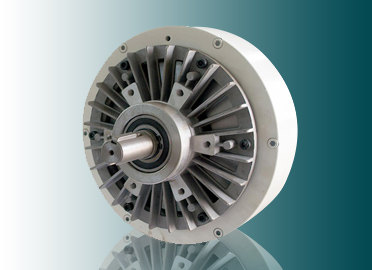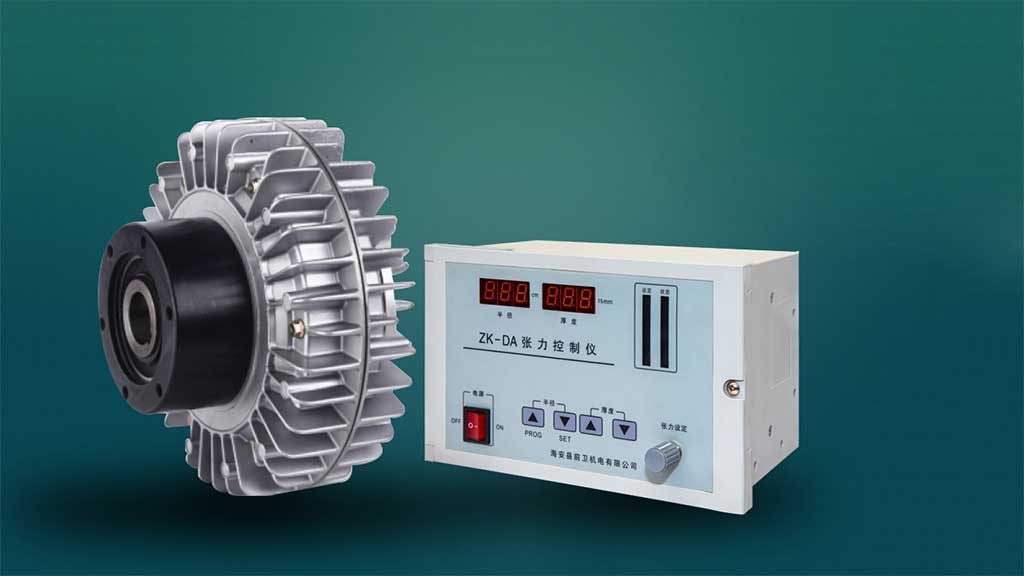A magnetic particle brake and clutch are both types of torque control devices that use the principles of magnetism to control the transfer of rotational force. However, they differ in their design and application.

- A magnetic particle brake is a device that uses a magnetic field to control the transfer of torque. It consists of two rotating parts, the input and output shafts, separated by a magnetic field. The magnetic field is generated by an electromagnet or a permanent magnet and is used to attract or repel magnetic particles inside the brake, thereby controlling the amount of torque transferred from the input to the output shaft. Magnetic particle brakes are commonly used in applications that require precise torque control, such as tension control in the printing industry or in the textile industry.
- A magnetic particle clutch is a type of torque control device that uses the principles of magnetism to transfer rotational force from one shaft to another. It consists of two rotating parts, the input and output shafts, separated by a magnetic field, and when an electric current is applied to the electromagnet, the magnetic field created causes the magnetic particles inside the clutch to form chains and connect the input and output shafts, thus transferring torque from one to the other.
Magnetic particle brake and clutch
Basics
A magnetic particle clutch is a type of torque control device that uses the principles of magnetism to transfer rotational force from one shaft to another. It consists of two rotating parts, the input and output shafts, separated by a magnetic field. The magnetic field is generated by an electromagnet or a permanent magnet and is used to attract or repel magnetic particles inside the clutch, thereby controlling the amount of torque transferred from the input to the output shaft.
A magnetic particle brake is a type of torque control device that uses the principles of magnetism to control the transfer of rotational force between two rotating parts. It consists of two parts, a stationary part and a rotating part, separated by a magnetic field. The magnetic field is generated by an electromagnet or a permanent magnet and is used to attract or repel magnetic particles inside the brake, thereby controlling the amount of torque transferred from the rotating part to the stationary part.
Principle
When an electric current is applied to the magnetic particle clutch, the magnetic field created causes the magnetic particles inside the clutch to form chains and connect the input and output shafts, thus transferring torque from one to the other. The amount of torque transferred can be controlled by varying the strength of the magnetic field, which in turn controls the amount of magnetic particle chains formed inside the clutch.
When the magnetic field is applied to the magnetic particles of magnetic particle brake, they form chains that link the rotating part to the stationary part, thus transferring torque from one to the other. The amount of torque transferred can be controlled by varying the strength of the magnetic field, which in turn controls the amount of magnetic particle chains formed inside the brake.
Application
Magnetic particle clutches are commonly used in industrial applications that require precise torque control, such as in printing presses, textile machines, and packaging equipment. They offer several advantages over other types of clutches, including smooth and precise torque control, quick response time, and low maintenance requirements.
Magnetic particle brakes are commonly used in applications that require precise torque control, such as in printing presses, wire drawing machines, and paper mills. They offer several advantages over other types of brakes, including smooth and precise torque control, quick response time, and low maintenance requirements.
Cons
Magnetic particle clutches and magnetic particle brakes also have some limitations, including the need for a power source to generate the magnetic field, the potential for the magnetic particles to wear over time, and the limited torque capacity compared to other types of clutches or brakes.
